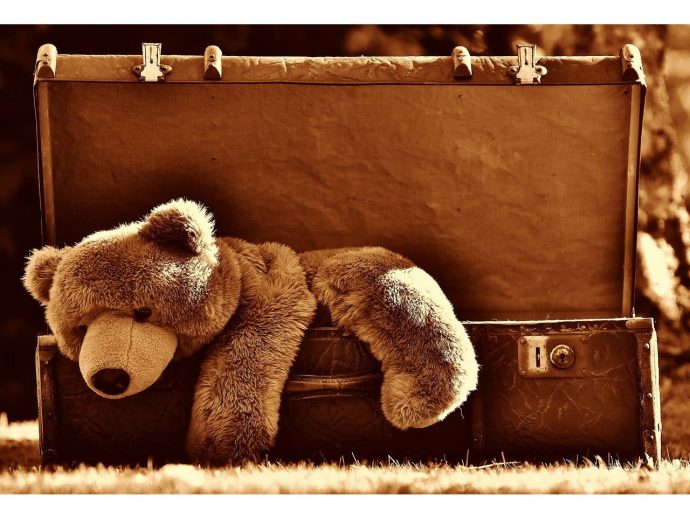Categories more
- Adventures (17)
- Arts / Collectables (15)
- Automotive (37)
- Aviation (11)
- Bath, Body, & Health (77)
- Children (6)
- Cigars / Spirits (32)
- Cuisine (16)
- Design/Architecture (22)
- Electronics (13)
- Entertainment (4)
- Event Planning (5)
- Fashion (46)
- Finance (9)
- Gifts / Misc (6)
- Home Decor (45)
- Jewelry (41)
- Pets (3)
- Philanthropy (1)
- Real Estate (16)
- Services (23)
- Sports / Golf (14)
- Vacation / Travel (60)
- Watches / Pens (15)
- Wines / Vines (24)
- Yachting / Boating (17)
Vintage Toys for Sale: 12 Ways to Identify Authentic Pieces
Published
09/10/2024Vintage toys hold a special place in many people's hearts. These timeless treasures not only evoke nostalgia but are also sought after by collectors and enthusiasts worldwide. However, with the rise of online markets and the prevalence of counterfeit products, it can be challenging to ensure you're purchasing authentic vintage toys.
In this article, we will explore twelve essential ways to identify genuine vintage toys and make informed buying decisions.
Identify Authenticity of Your Vintage Collection
1. Research Well
Before venturing into the world of vintage toy collecting, it's crucial to educate yourself about the specific eras, brands, and toy models that interest you the most. Conduct thorough research online and consult reliable reference books or expert opinions within toy collector communities. By familiarizing yourself with various details such as packaging variations, production years, or unique features specific to each vintage toy line, you'll gain an advantage in identifying genuine items.
2. Check Original Packaging
One of the indicators of authenticity when you vintage toys for sale online, is original packaging. Genuine vintage toys often come with specific packaging reflecting the era in which they were produced. Look for logos, typography styles, and printing techniques commonly used during that particular period. Moreover, pay attention to any copyright notations or original price tags on the box or packaging materials; these can offer valuable clues about authenticity.
3. Quality Materials
Authentic vintage toys are typically made from high-quality materials durable enough to withstand hours of playtime during their era. Check for sturdy construction and look out for features like die-cast metal parts or hand-painted details that contribute to their authenticity.
4. Manufacturer’s Markings
An excellent way to distinguish genuine vintage toys is by examining the manufacturer's markings explicitly present on both the toy itself and its accompanying box or packaging material. These markings may include brand names, logos, copyright symbols, country of origin indications (such as "Made in..."), serial numbers, or year of production. Compare these markings with credible reference sources to ensure consistency.
5. Documentation and Certificates
Some vintage toy editions may come with supporting documentation or certificates of authenticity from reputable collectors, auction houses, or toy manufacturers themselves. While these documents can be easily forged, they still add an extra layer of assurance when purchasing high-value vintage toys.
6. Wear and Tear
As counterintuitive as it may sound, minor wear and tear can sometimes indicate the authenticity of vintage toys. Genuine vintage items often show signs of usage and patina, reflective of their age and charm. Scratches, paint chipping (without excessive repainting), scuffs or slight fading are common characteristics found on well-loved vintage toys.
7. Serial Numbers and Mold Markings
Serial numbers stamped on specific parts of the toy itself (such as undercarriages or hidden areas) are another telltale sign that you're dealing with an authentic vintage piece. Additionally, molded markings on the interior surfaces provide evidence of original production methods employed by toy manufacturers.
8. Weight and Feel
Authentic vintage toys tend to feel substantial when held due to the materials used during production plastic compositions being sturdier than those used in modern replicas. Pay attention to weight for comparison when identifying potential counterfeit toys.
9. Paint Colors and Variations
Imperfections in paint colors or variations from batch-to-batch were quite common during the manufacture of vintage toys - unlike today's mass-produced replicas that strive for uniformity at all costs. Thus, noticing slight differences in paint shade, application style (brush versus airbrush), or minor variations between identical models is often a positive sign indicating authenticity.
10. Details Matter
Examine intricate details specific to each toy line carefully - original stickers, decals, accessory types/colors/authentic prints, and concealed package contents like catalogs/brochures inside each set. Articulation (movable limbs/joint types) unique facial expressions Actually documented variants unadvertised changes by factories; parts listed changed secret compartments various types of joining materials
11. Seek Expert Opinions
Don't hesitate to reach out to reputable vintage toy appraisers and experts who have experience in authenticating vintage pieces. Their vast knowledge and a trained eye can provide invaluable insights into the authenticity of a prospective purchase.
12. Trustworthy Sources
Lastly, always strive to acquire authentic vintage toys from reliable sources with a solid reputation within the collecting community. Establishing relationships with trusted dealers, well-established auction houses, or esteemed online marketplaces considerably reduces the risks associated with purchasing counterfeit or misrepresented items, ensuring you enjoy the true beauty and value of vintage toys.
Conclusion
Identifying authentic vintage toys requires a keen eye for detail, extensive research, and an understanding of historical context. By familiarizing yourself with the various identifying factors mentioned above, you'll be well-equipped to navigate the world of vintage toy collecting confidently. Remember that acquiring genuine pieces not only secures your investment but also adds charm and historical significance to your collection.















